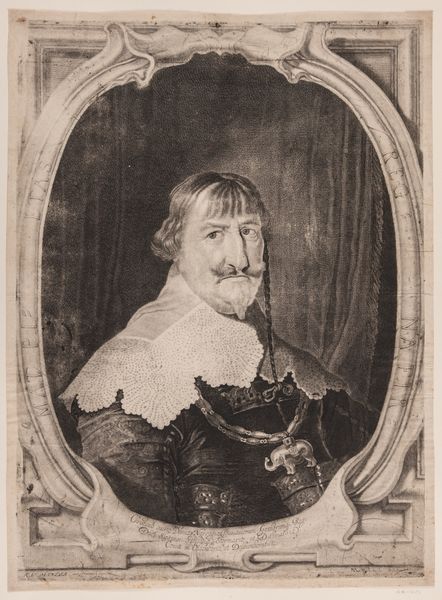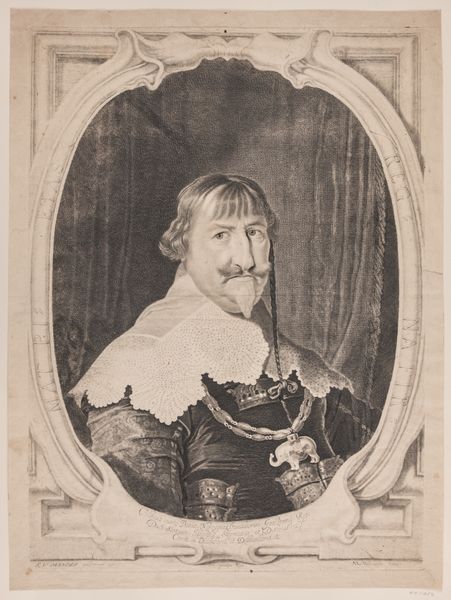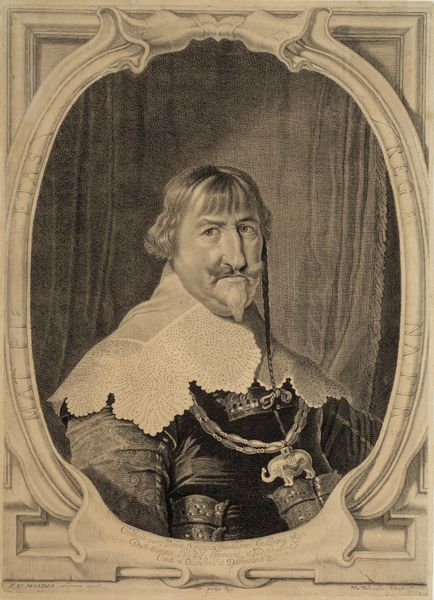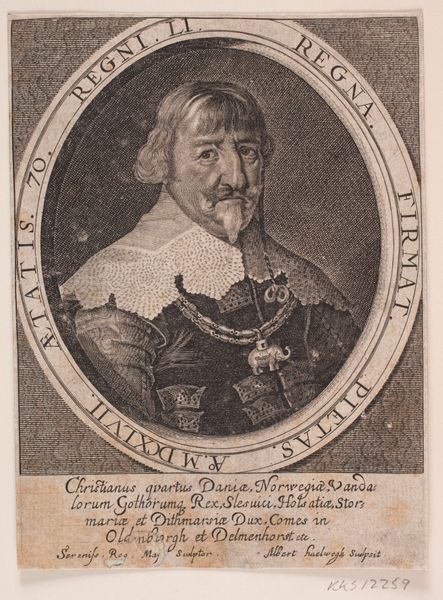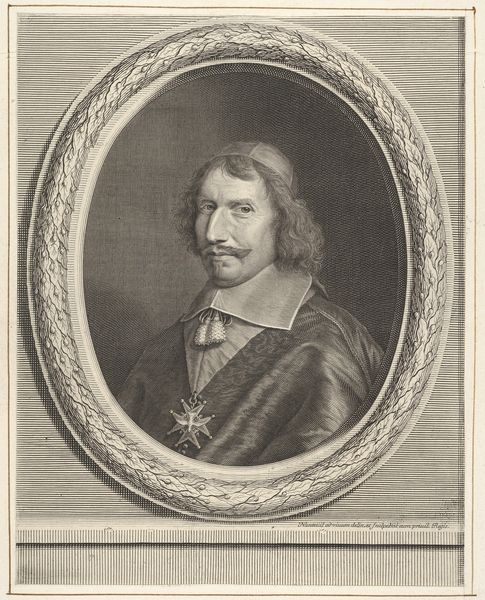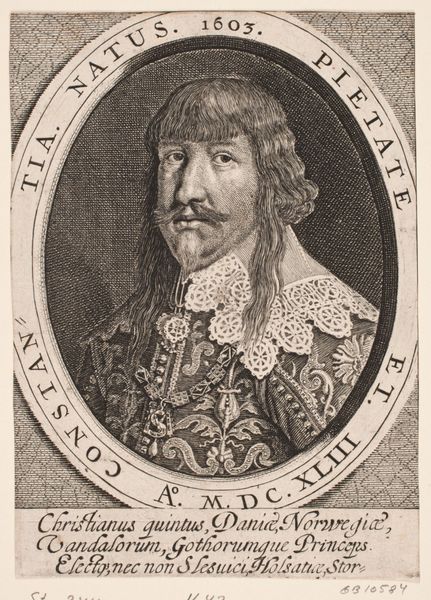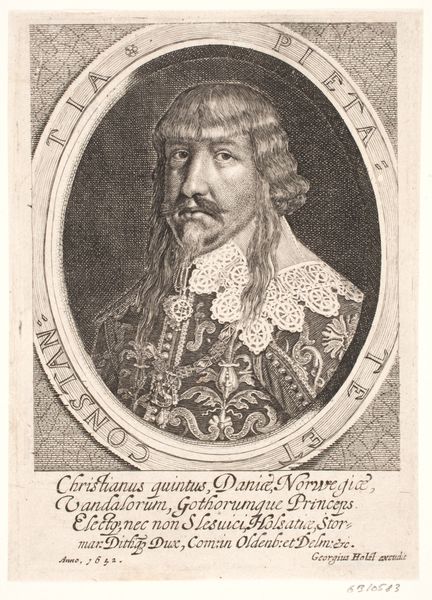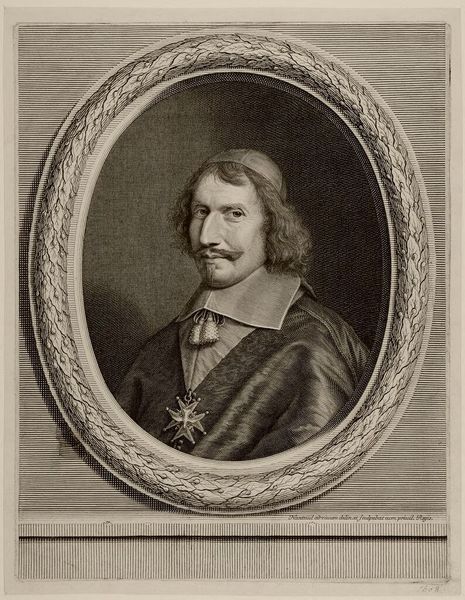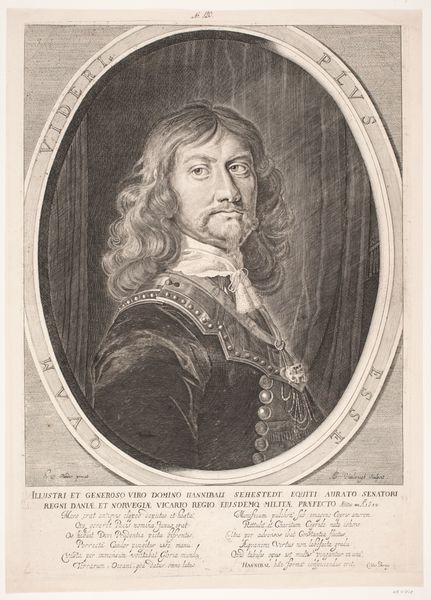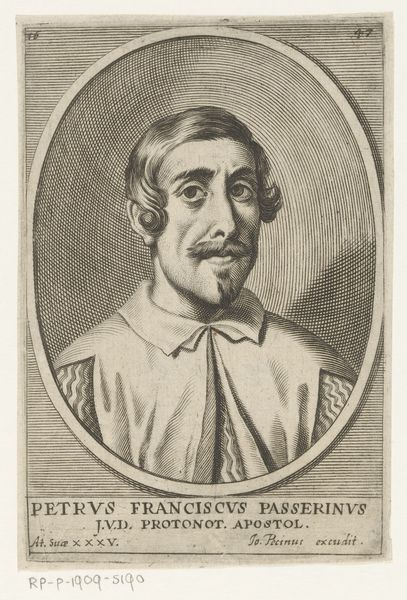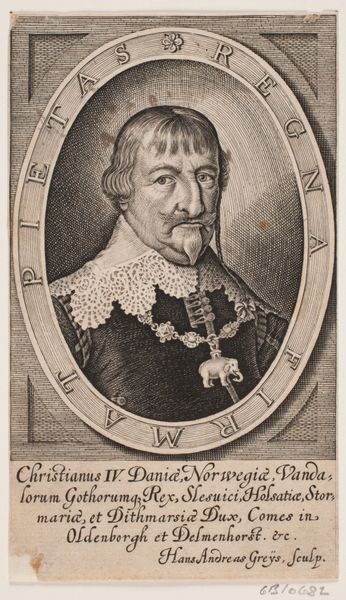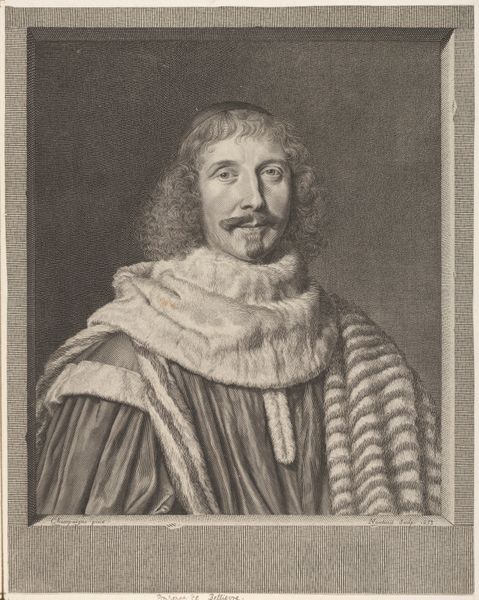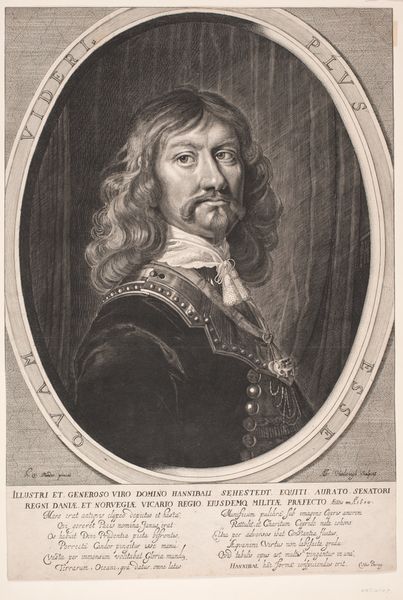
print, engraving
#
portrait
#
baroque
# print
#
figuration
#
19th century
#
line
#
history-painting
#
engraving
Dimensions: 438 mm (height) x 345 mm (width) (billedmaal)
Curator: This engraving presents Christian IV, the King of Denmark and Norway, rendered between 1643 and 1647 by Albert Haelwegh. Immediately, the texture of the piece captures the eye. Editor: There’s an almost unsettling starkness in the lines; despite the regal subject, it’s anything but flattering. The intense detailing in his collar almost competes with his face, making me focus perhaps inappropriately, on those heavy lines around his eyes. Curator: Precisely! And those lines are key to the visual language. As a print, this work would have been disseminated widely. Consider how such portraits functioned within the political sphere – asserting power and conveying authority to a broad audience. Editor: But what kind of power is being projected? His features appear almost… cartoonish, verging on grotesque. I’m immediately questioning whose interests are truly served by *this* particular portrayal, and in whose eyes. There’s a tension between grandeur and vulnerability, I feel. Curator: Interesting, the grandeur is definitely there, if subtly so. Consider his attire—the elaborate lace collar, the chain of the Order of the Elephant—each element meticulously engraved to showcase the king’s status. These symbols are inherently tied to the social structure of the time, the rigid hierarchy upheld through visual representation. Editor: That Order of the Elephant, it’s meant to signal importance but ends up almost as satire. The scale seems off, don't you think? It emphasizes the strangeness of the man, and perhaps hints at anxieties around his reign. What are the visual cues suggesting about Christian IV's rule during this later stage? Curator: Yes, indeed. During this period, Denmark was involved in the Thirty Years' War, and while he aimed to solidify Denmark's position as a major European power, his policies led to considerable debt and conflict. The print does not overtly critique, but it’s made and viewed within this specific historical and socio-political context. Editor: That’s key – how artistic choices are never truly neutral, they are borne out of a messy blend of intention, access, and the prevailing sentiments of their time. I find this makes viewing art such as this far more rewarding, even if challenging, than a surface perusal can reveal. Curator: Agreed. Understanding the era, its power structures, and how they influenced art production opens up the work to far more nuanced readings. Editor: Right. It forces us to question not just what we see, but *why* we see it that way, and who benefits from that vision.
Comments
No comments
Be the first to comment and join the conversation on the ultimate creative platform.
